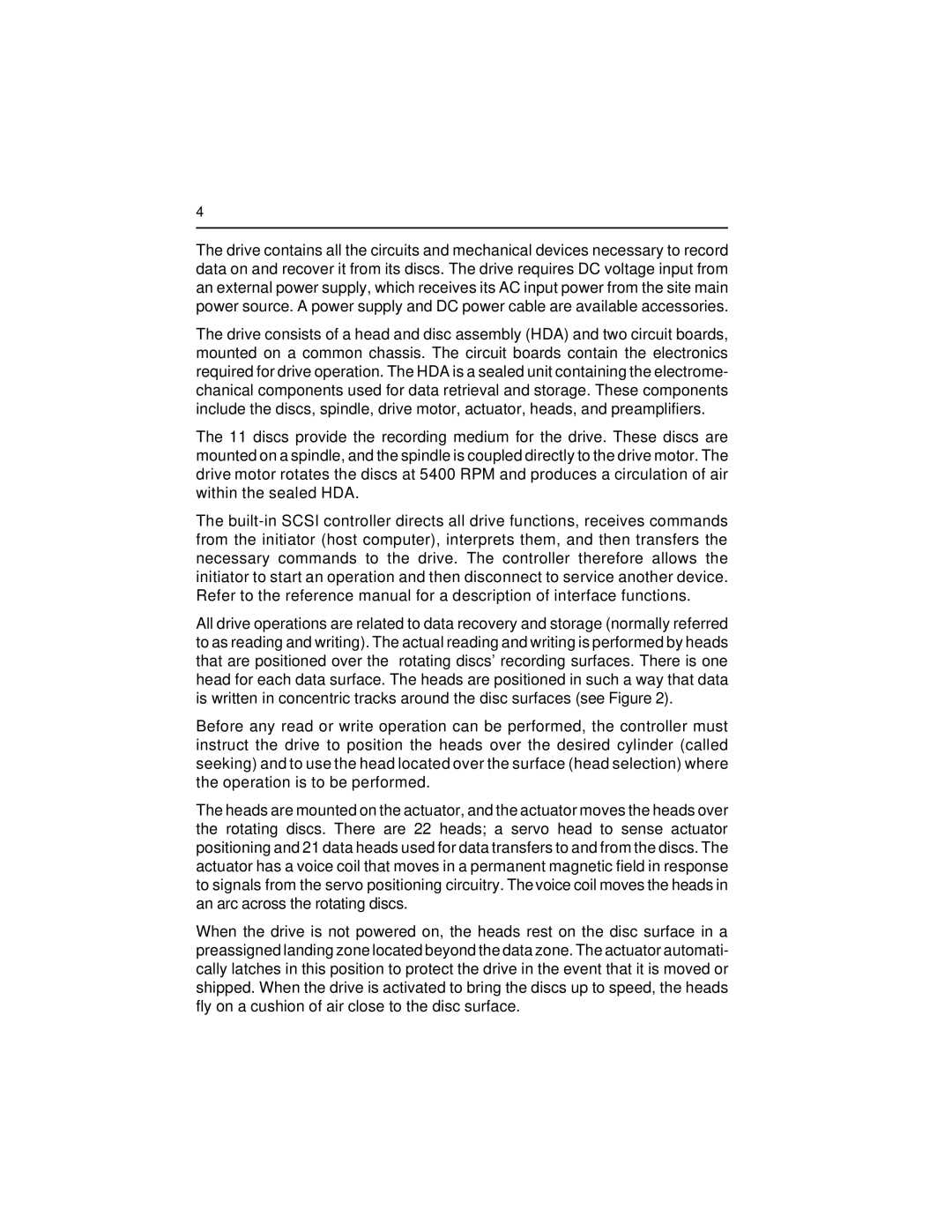4
The drive contains all the circuits and mechanical devices necessary to record data on and recover it from its discs. The drive requires DC voltage input from an external power supply, which receives its AC input power from the site main power source. A power supply and DC power cable are available accessories.
The drive consists of a head and disc assembly (HDA) and two circuit boards, mounted on a common chassis. The circuit boards contain the electronics required for drive operation. The HDA is a sealed unit containing the electrome- chanical components used for data retrieval and storage. These components include the discs, spindle, drive motor, actuator, heads, and preamplifiers.
The 11 discs provide the recording medium for the drive. These discs are mounted on a spindle, and the spindle is coupled directly to the drive motor. The drive motor rotates the discs at 5400 RPM and produces a circulation of air within the sealed HDA.
The
All drive operations are related to data recovery and storage (normally referred to as reading and writing). The actual reading and writing is performed by heads that are positioned over the rotating discs’ recording surfaces. There is one head for each data surface. The heads are positioned in such a way that data is written in concentric tracks around the disc surfaces (see Figure 2).
Before any read or write operation can be performed, the controller must instruct the drive to position the heads over the desired cylinder (called seeking) and to use the head located over the surface (head selection) where the operation is to be performed.
The heads are mounted on the actuator, and the actuator moves the heads over the rotating discs. There are 22 heads; a servo head to sense actuator positioning and 21 data heads used for data transfers to and from the discs. The actuator has a voice coil that moves in a permanent magnetic field in response to signals from the servo positioning circuitry. The voice coil moves the heads in an arc across the rotating discs.
When the drive is not powered on, the heads rest on the disc surface in a preassigned landing zone located beyond the data zone. The actuator automati- cally latches in this position to protect the drive in the event that it is moved or shipped. When the drive is activated to bring the discs up to speed, the heads fly on a cushion of air close to the disc surface.
